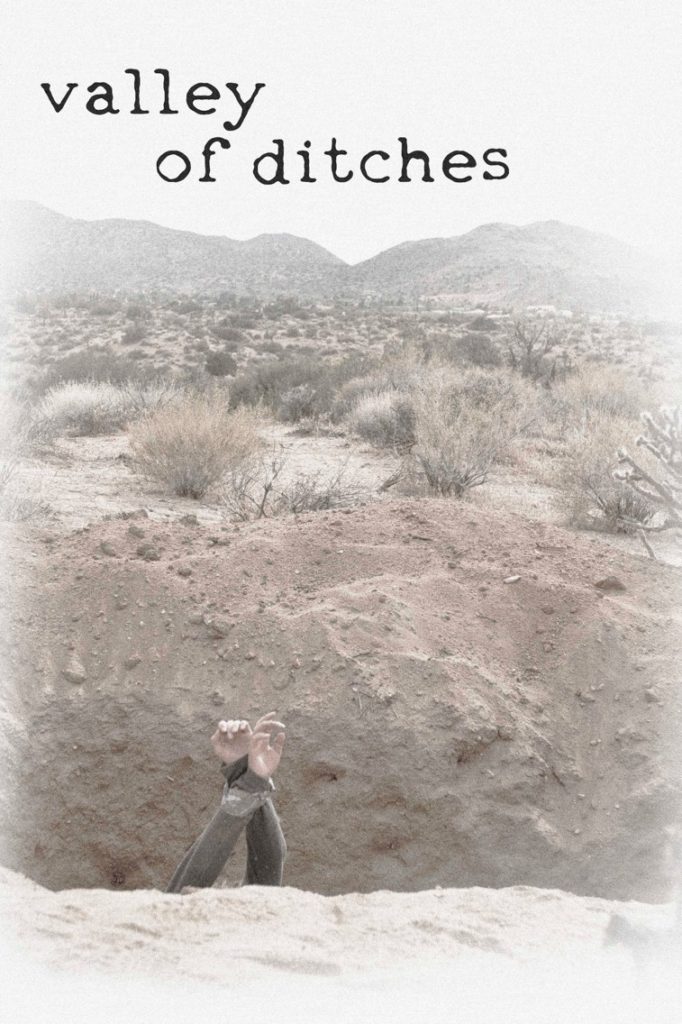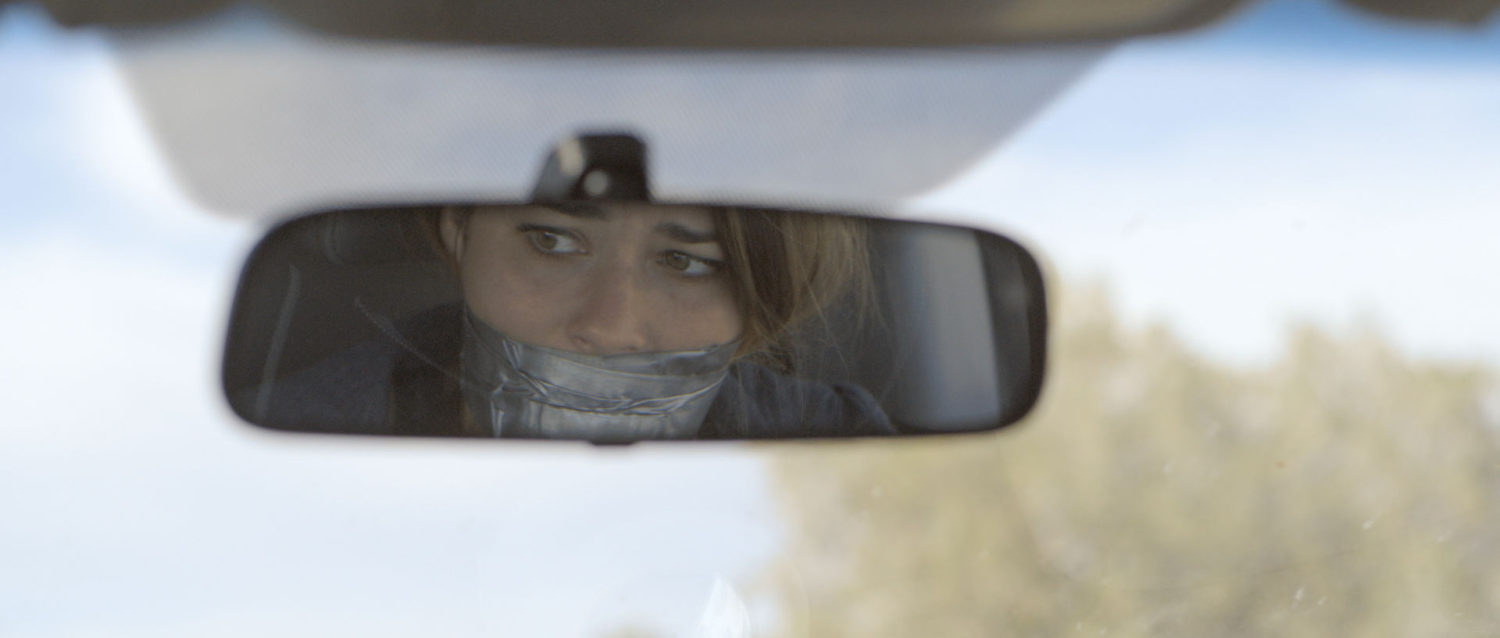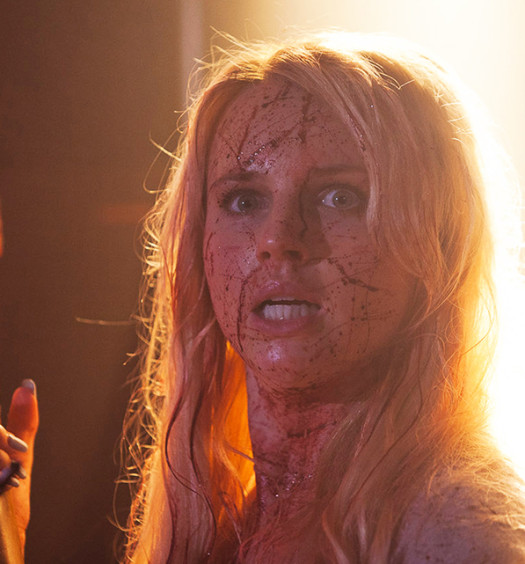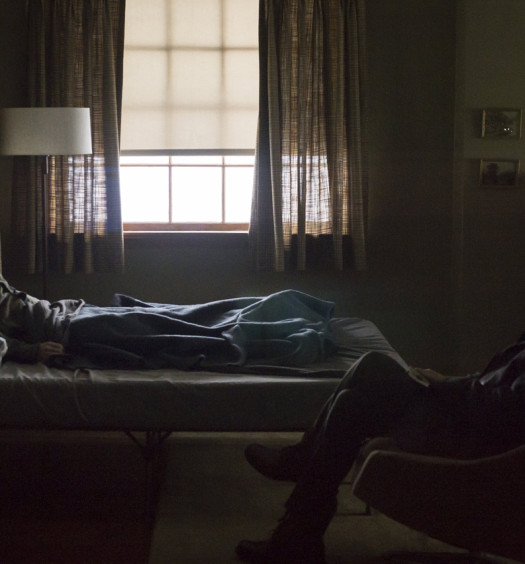Do memories exist if there is no one left to remember them? This is one of the questions posed at the beginning of Valley of Ditches, the latest film from writer/director Christopher James Lang and Amanda Todisco, who co-wrote the screenplay and stars as Emilia.
The film opens with what is later revealed to be a flashback scene. Emilia, kidnapped and bound in a car out in the desert, is remembering a conversation she had with her boyfriend Michael while she watches someone digging a grave a short distance away. Immediately, our minds want to know: how did she get to this point? Yet the movie parcels out information in small bits, contrasting flashbacks to Emilia’s past with her current situation in such a way so that we feel like we’re experiencing things along with her.
Valley of Ditches is an effectively low-key affair, and shows its indie roots in its unfussy yet intensely focused cinematic style and subtle soundtrack.
Valley of Ditches is an effectively low-key affair, and shows its indie roots in its unfussy yet intensely focused cinematic style and subtle soundtrack. This doesn’t mean, however, that it comes across as amateurish. The cinematography and framing of scenes are both excellent. The early scenes of Emilia in the car rely heavily on what are intended to be her POV: reflections of her face in the rearview mirror and the gravedigger in the side view mirror. This gives the sequence an appropriately claustrophobic feeling, one that continues throughout the movie.
The setting is simple in the film, but powerful. Emilia does escape from the car she’s in, but she’s also in the middle of the desert without any transportation and someone wants to kill her, a potentially lethal combination. That person is Sean, and he’s already killed Emilia’s boyfriend. Again, our minds race: who is Sean and why did he kill Michael? We seem to have about as much information on Sean and his motives as Emilia does; he spouts a lot of quotes from the Bible and talks about sinning and penance and it’s obvious that he is not just a killer, but a delusional one.
This lack of back story, again, puts us right there in the thick of danger with Emilia, and it’s an extremely effective way of increasing suspense as well as our emotional stakes in the film’s narrative. Well-crafted flashbacks that help us to not only understand what kind of person Emilia is and but also invest us in her fate.
About one-third of the way into the film’s 89-minute run time, you start to feel like you’ve seen this before: a girl gets kidnapped and tortured but in the end she triumphs. There’s a little bit of Martyrs in Valley of Ditches, not in that film’s intense gore and violence, but in the sense of wanton cruelty. Yes, things get a lot worse for Emilia, and there is one scene that’s so graphic it almost made me physically ill. Valley of Ditches doesn’t shy away from the harsh truths of Emilia’s situation, and to avoid spoilers, I’ll just say that this holds true even when the threats against her are only heard and not seen.
Yet, the movie doesn’t go down the path I expected and its ending, which is simultaneously cathartic and depressing, is downright horrifying.
Yet, the movie doesn’t go down the path I expected and its ending, which is simultaneously cathartic and depressing, is downright horrifying. While sometimes the acting in Valley of Ditches feels a little stilted and the dialogue a bit heavy-handed towards the end, the movie transcends its micro-budget indie horror trappings to become a sobering meditation on something far beyond the seemingly simple scenario of a woman who has been kidnapped and is trying to escape.
There is a lot that Valley of Ditches never reveals, but that’s a good thing. The questions it poses are ones that are worth considering. I look forward to more films from Lang and Todisco.

Valley Of Ditches [Review]
Sobering
Valley Of Ditches transcends its micro-budget origins to become something special.































